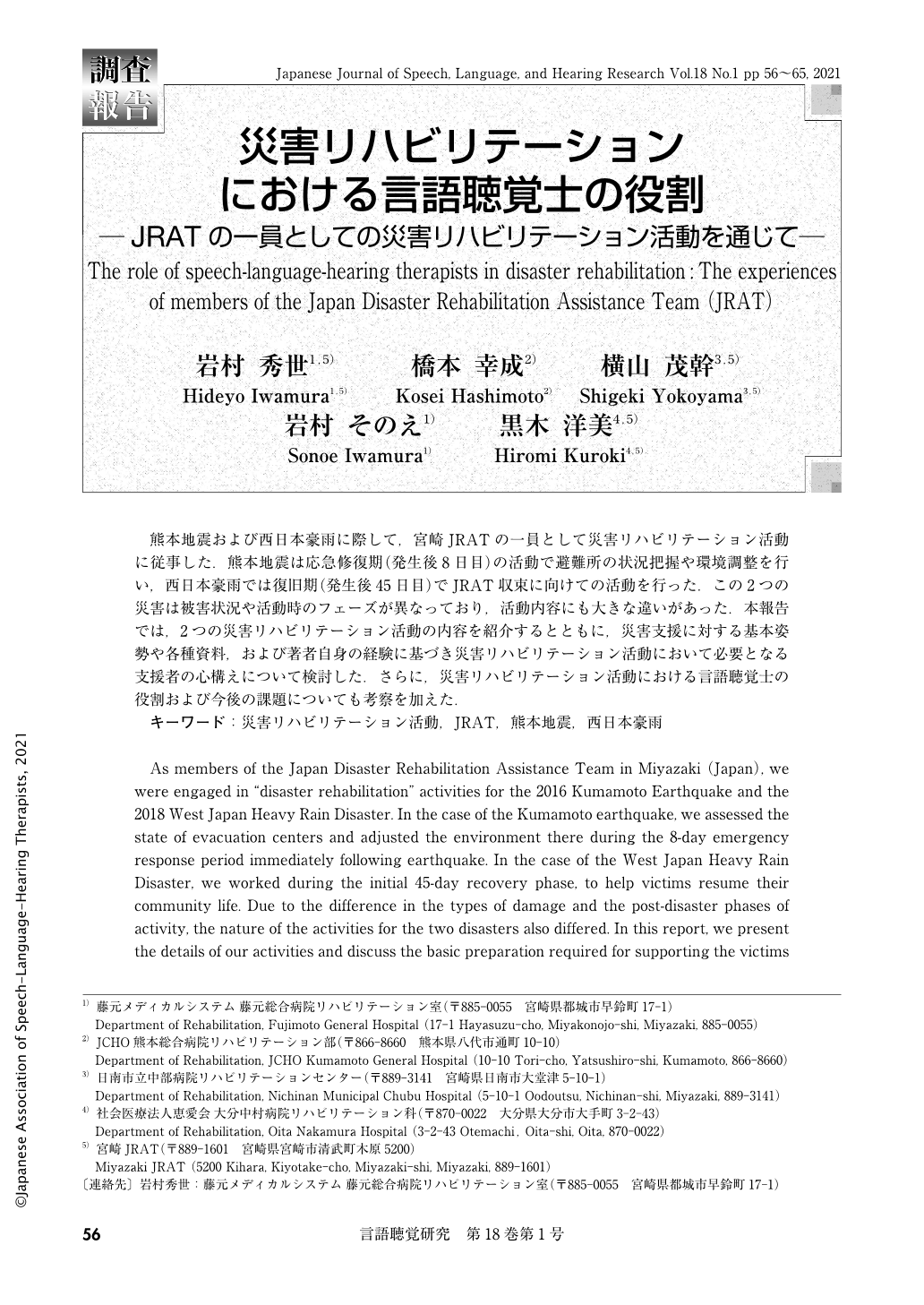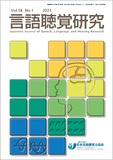Japanese
English
- 有料閲覧
- Abstract 文献概要
- 1ページ目 Look Inside
- 参考文献 Reference
- サイト内被引用 Cited by
熊本地震および西日本豪雨に際して,宮崎JRATの一員として災害リハビリテーション活動に従事した.熊本地震は応急修復期(発生後8日目)の活動で避難所の状況把握や環境調整を行い,西日本豪雨では復旧期(発生後45日目)でJRAT収束に向けての活動を行った.この2つの災害は被害状況や活動時のフェーズが異なっており,活動内容にも大きな違いがあった.本報告では,2つの災害リハビリテーション活動の内容を紹介するとともに,災害支援に対する基本姿勢や各種資料,および著者自身の経験に基づき災害リハビリテーション活動において必要となる支援者の心構えについて検討した.さらに,災害リハビリテーション活動における言語聴覚士の役割および今後の課題についても考察を加えた.
As members of the Japan Disaster Rehabilitation Assistance Team in Miyazaki (Japan), we were engaged in “disaster rehabilitation” activities for the 2016 Kumamoto Earthquake and the 2018 West Japan Heavy Rain Disaster. In the case of the Kumamoto earthquake, we assessed the state of evacuation centers and adjusted the environment there during the 8-day emergency response period immediately following earthquake. In the case of the West Japan Heavy Rain Disaster, we worked during the initial 45-day recovery phase, to help victims resume their community life. Due to the difference in the types of damage and the post-disaster phases of activity, the nature of the activities for the two disasters also differed. In this report, we present the details of our activities and discuss the basic preparation required for supporting the victims based on the literature, available data, and our experience. In addition, we discuss the role of speech-language-hearing therapists in disaster rehabilitation and the possible challenges they may face following similar disasters in the future.

Copyright © 2021, Japanese Association of Speech-Language-Hearing Therapists. All rights reserved.


